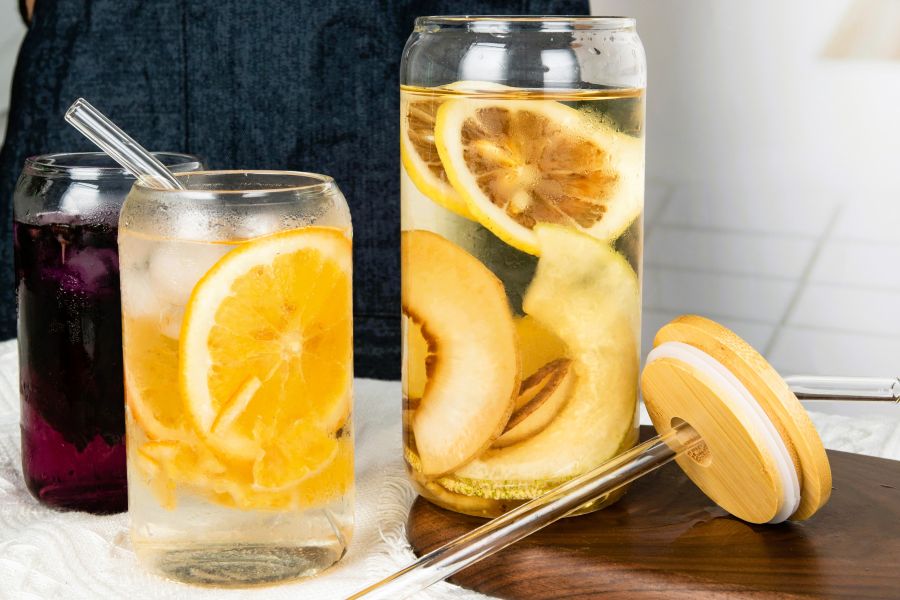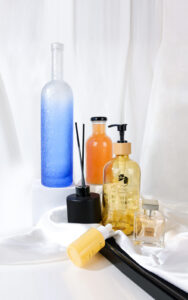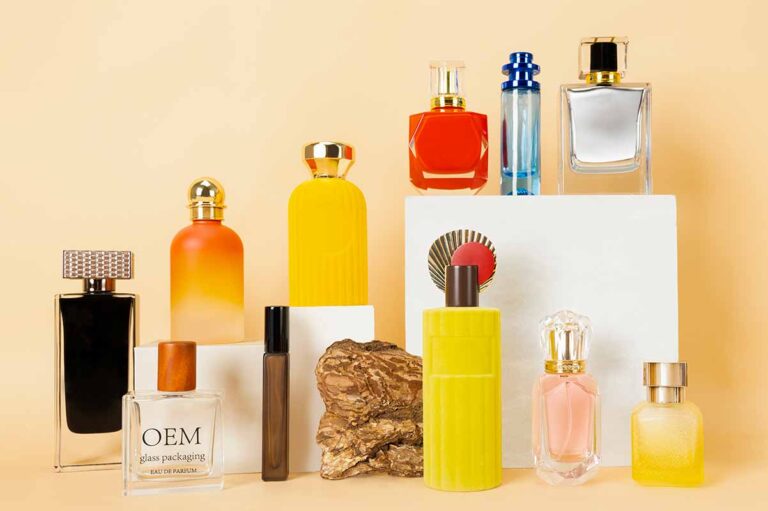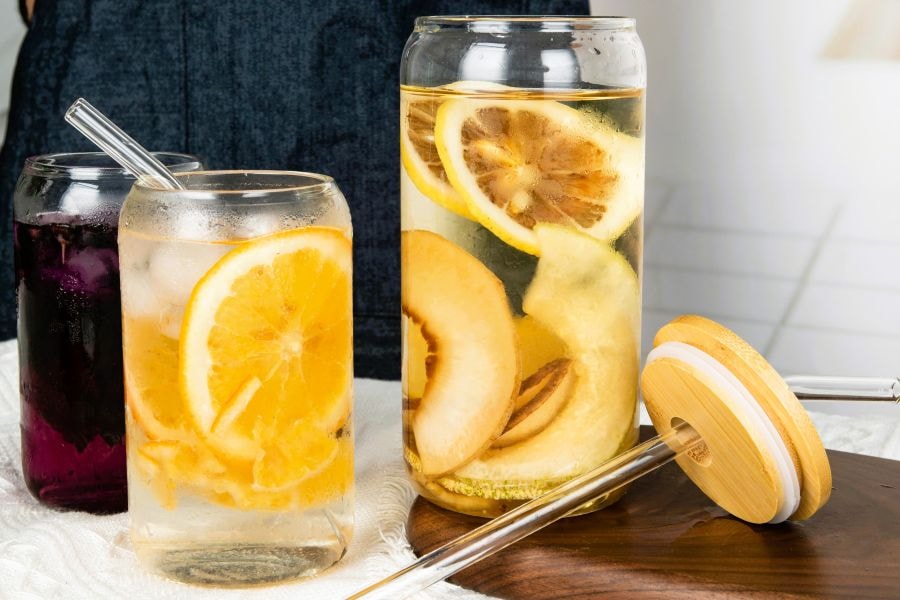
Glass is a popular material for making cookware, light bulbs, scientific beakers and other items. However, not many people know the various glass types and their applications in multiple industries. Borosilicate glass is a premium glass type with numerous applications in different industries.
In this article, we discuss the history, properties, applications, and safety precautions when handling borosilicate glass.
Introduction to Borosilicate Glass
High concentrations of silica, boron trioxide, soda ash and alumina are the key ingredients that manufacturers use to make borosilicate glass. Pyrex, Duran, Glassco, or Borosil are some of the different names of borosilicate glass.
The presence of boron trioxide allows borosilicate glass to withstand sudden temperature changes. That means you can put borosilicate glassware straight from a freezer into the oven without cracking.
History and Manufacturing Process
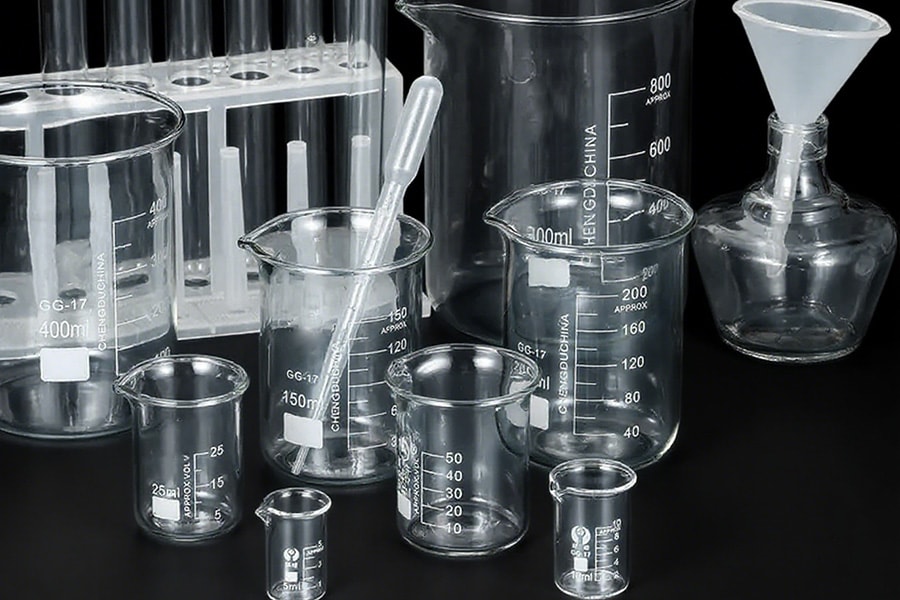
Origins and Invention
Otto Schott, a German glassmaker, was the pioneer who created borosilicate glass in the late 1800s. Known as Jena glass, as that is the German town where Otto Schott resided, the first application was in laboratory glassware and kitchenware.
In 1915, Corning Glass Works launched borosilicate glass with low thermal expansion and branded it Pyrex.
Evolution and Industrial Adoption
With time, the superior properties of the glass would make it popular for bakeware, kitchen tools, and lighting. Borosilicate glass makes measuring cups with graduated measurements. The glass is ideal for creating high-quality glassware specifically for hot drinks.
Borosilicate glass would eventually find its way into the electronics industry. Its insulating properties make the glass a great material for making high-end displays and semiconductor components.
Manufacturing Methods
Manufacturers use different methods in the production of borosilicate glass. Careful control of temperatures and composition is essential to achieve suitable properties. After careful selection and weighing of the raw materials, manufacturers heat them in a high-temperature furnace.
After melting, the refining stage ensures the removal of any gases or bubbles. Shaping is then done using techniques such as floating, molding and tube drawing.
Borosilicate glass shaping methods | Description |
Floating | The method produces flat sheets of glass with a smooth surface layer. |
Molten borosilicate glass is poured onto a tin bath, creating a sheet. Elevation of the glass to the top occurs, since it is lighter than tin. | |
It’s an ideal method for making window glass, mirrors and flat panels. | |
Tube drawing | A suitable method for making hollow glass tubes. |
Molten borosilicate glass is pulled through a special nozzle, shaping it into a hollow cylinder. | |
The method is ideal for making test tubes, glass pipes, and lighting or electrical components. | |
Molding. | A metal mold with the exact shape of the final product is first made. |
Molten borosilicate glass is then blown or pressed into the mold. | |
The method allows mass production of complex shapes and decorative designs. |
Physical Characteristics
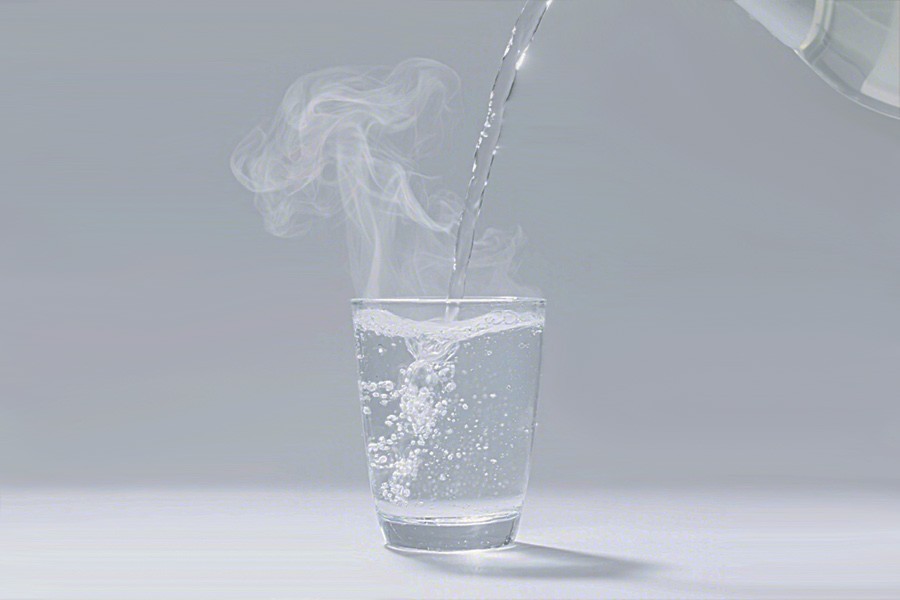
Thermal Expansion and Shock Resistance
Imagine putting boiling water in a glass and having it crack immediately. But can you put boiling water in a glass? It’s possible if you put the boiling water in a borosilicate glass. One of the properties of borosilicate glass is high thermal shock resistance.
Boron trioxide (15%) gives borosilicate glass its thermal expansion resistance property.
Chemical Resistance
Borosilicate glass has a low solubility property that prevents particles or chemicals from leaching into or out of the glass jars. The glass does not react with or absorb acids or bases. Borosil glass does not corrode.
Boron makes borosilicate glass safe for food contact by acting as a shield, preventing leaching. For example, you can put vegetables inside empty jars and not have to worry that chemicals will leach inside.
Mechanical Strength
While borosilicate glass is less prone to shattering due to sharp impacts, soda lime shatters easily under direct impact. However, soda lime glass does not crack under sudden temperature changes.
But, does boiling water break glass? Yes, especially regular glass. Hot water causes an expansion of the inner layer, while the outer layer remains cold.
However, borosilicate has a high compressive strength and a hardness that ensures the longevity of various types of equipment. Borosilicate shatter toughness is also high, resisting wear after daily use.
Applications of Borosilicate Glass
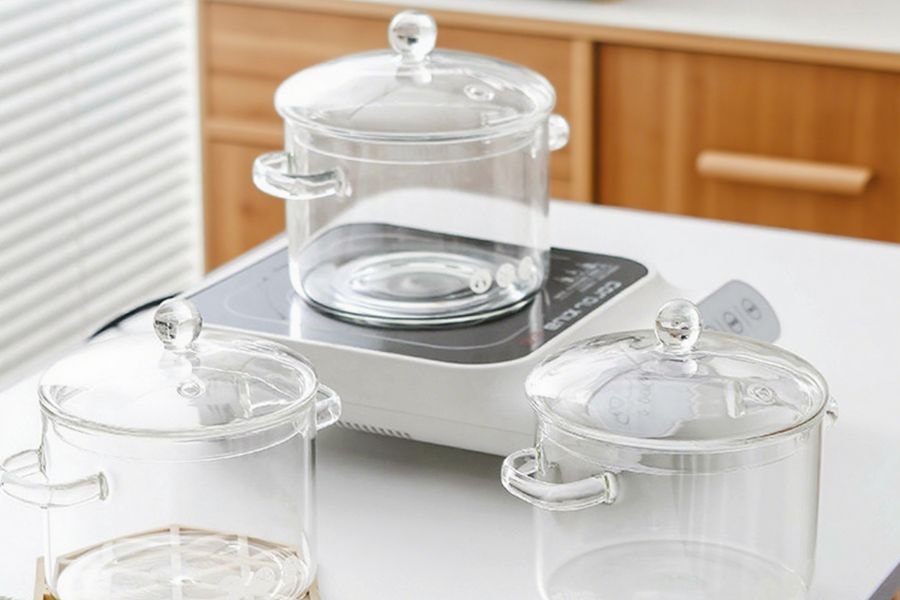
Scientific and Industrial Uses
Borosilicate glass is ideal for making laboratory glassware, such as flasks, beakers, test tubes, jars, and chemical apparatus. Those that will be put inside a boiling water canner should also be made from borosilicate.
Manufacturers prefer to use borosilicate glass in the making of hot mirrors, which help protect sensitive optical systems. It also helps glass receptacles tolerate intense heat during lightning. High-intensity discharge lamps (HID), sensors, glass wafers, and optical fibers are some of the components made from borosilicate glass.
Cookware and Kitchen Tools
Ideal for use in frequent high or low temperatures, borosilicate glass is a good option for cookware. Baking dishes made from borosilicate glass can withstand high oven temperatures, similar to coffee pots for boiling or jars for keeping hot drinks.
Unlike regular glass, which cracks when boiling water is put inside, borosilicate glass can store hot water for a longer period without cracking. The glass is ideal for making a pressure canner, which is more suitable when canning acidic foods.
Specialized Industries
Borosilicate glass is also essential in other types of industries. Because borosilicate glass can withstand high temperatures, it is suitable for making a variety of lighting applications. Halogen bulbs, lenses, and light covers are some of the applications.
Due to its low thermal expansion coefficient, borosilicate glass is suitable for making heat-resistant windows, viewing ports, and protective shields for the aerospace industry. The glass has low density, making it a suitable lightweight material for constructing spacecraft components and optical systems.
Borosilicate Glass vs Regular Glass
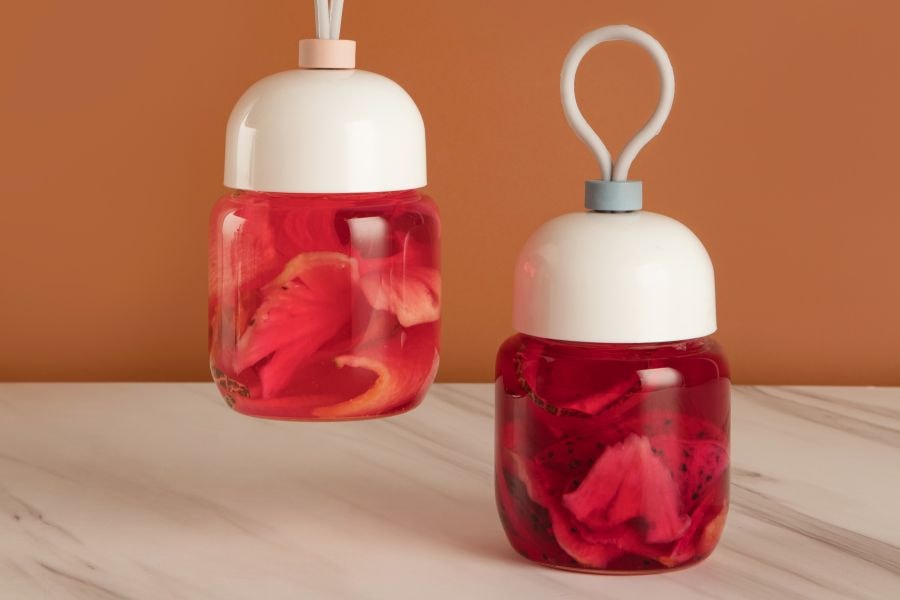
Uses in Kitchen and Food Storage
Borosilicate glass has non-reactive, durable, and heat-resistant properties, which make it ideal for kitchen and food storage.
Food Preservation
Due to its non-reactive nature, borosilicate glass is suitable for making empty jars for storing prep meals, fruits, or leftovers. It prevents interaction with acidic or alkaline foods in a storage place such as the fridge or the rack. By being chemically inactive, the glass prevents contamination of food.
Borosilicate glass jars are ideal for canning meats, fruits, and vegetables. Get a few empty jars and put your food items in them, and label the jars. Remember to wash and heat the empty jars before placing the food in them to prevent breakages. Once the empty jars are filled with food, secure them with lids and bands. Place the jars into a boiling water canner, or use a large pot if a boiling water canner is not available.
If you’re wondering how to sterilize jars for canning, we recommend using a pressure canner. Alternatively, use a boiling water canner, and ensure the hot water covers the jars. Borosilicate glass jars can withstand the high temperatures of boiling water during the sterilization process. Some people use the microwave, dishwasher or oven to sterilize the jars. Remember to sterilize the lids, too.
After the sterilization process, remove the jars, put in your food and store them on the rack or fridge.
Storage Benefits
Borosilicate glass has a non-porous surface that resists odors and bacteria, making the empty jars hygienic for food storage. Unlike plastics, borosilicate glass jars keep your food or fruits pure and fresh. The glass jars remain stable under extreme temperatures, preventing bacterial growth.
The glass does not leach, allowing you to store your food as long as you want. When it’s time to defrost the food, all you have to do is run the food jars under warm or hot water. You don’t have to worry when storing acidic or alkaline foods, as borosilicate glass is stain-resistant.
Cooking and Baking
Borosilicate glass is safe for use in microwaves and ovens since it resists thermal shock and does not emit harmful substances. It is also less prone to breaking when exposed to rapid temperature shifts. Borosilicate is suitable for making baking dishes, pie plates, and casserole dishes.
Due to its heat-resistant property, borosilicate glass is ideal for cookware such as sauce pans that you can use for direct cooking on stovetops. Thin walls allow you to see the food cooking or hot water boiling.
Safety Precautions and Handling
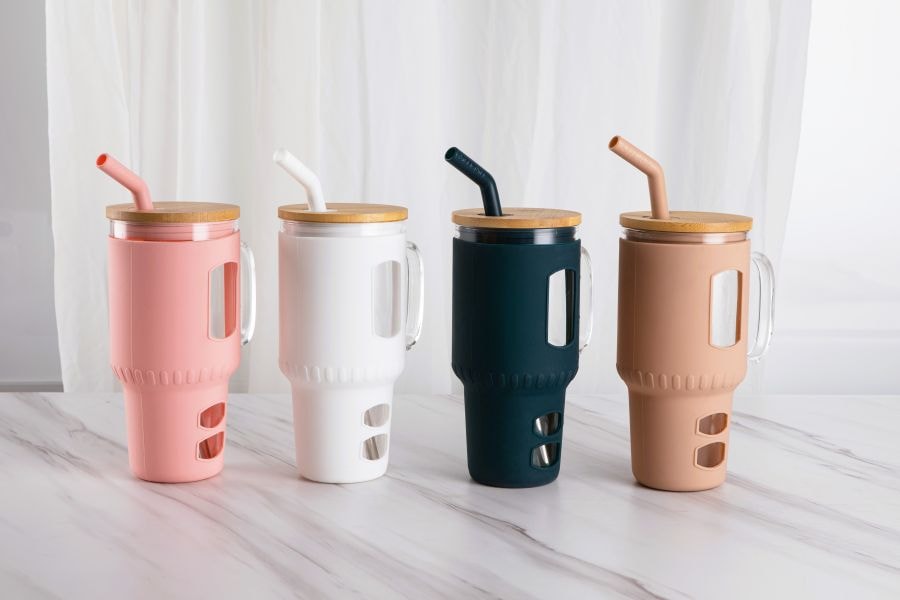
Just because borosilicate glass has a high thermal shock resistance, it does not mean it’s unbreakable. Proper handling is essential if you want the borosilicate glassware to keep giving the best results.
General Safety Guidelines
Wearing safety equipment, like gloves, is essential when dealing with heated borosilicate glassware. Consider using tongs to hold the hot glass jars instead of your bare hands. Place the hot glassware on a hot-resistant mat to prevent burns.
Avoid storing in a place where the glassware will experience temperature swings. Keep them away from the oven or the stove, as temperature swings can cause unnecessary stress on the glassware. Use shelf liners when stacking to prevent glass-on-glass contact, which can result in chips or cracks.
Preventing Thermal Shock
Do not place a dish directly from the freezer onto a hot surface. Sudden shock stress can either weaken or cause immediate cracking.
Before heating, allow the dish to sit at room temperature for a few minutes. On the other hand, let the hot dishes cool on a rivet and not on a cold granite surface.
We recommend using boiling water instead of the microwave, oven or dishwasher when you want to sterilize the glassware. Wash the jars and lids with warm, soapy water before sterilization.
Maintenance and Care
Use mild dish soap and water for cleaning. Harsh chemicals are unnecessary and can leave residues on the glass top-most layer. Use a soft cloth or dishwasher. Frequent sterilization of the glassware is also ideal.
Always inspect the glassware for any cracks or chips before use. Even a small defect or deep scratches can become major under heat and pressure.
Final Thoughts:
Borosilicate glass is popular for its durability and ability to handle heat and chemicals. It offers reliability that lasts, whether you’re using it for cookware, laboratory or other industrial applications.
At HUIHE PACK, we specialize in high-quality borosilicate glass products for beverage packaging
Contact us to get safe, durable, and stylish borosilicate glass bottles for your drinks.
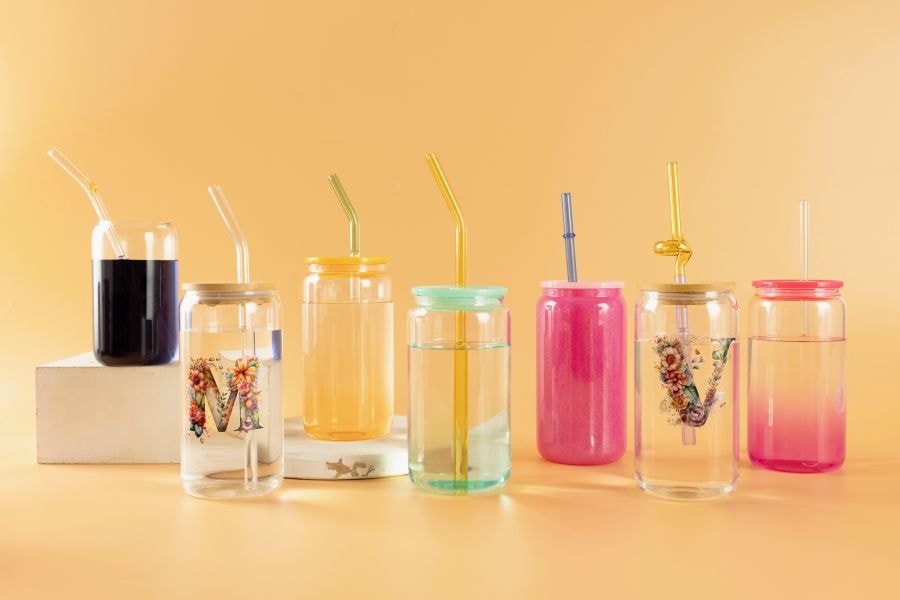
Borosilicate Glass FAQs:
Q1: Is borosilicate glass safe and healthy?
Yes, borosilicate glass is non-toxic. It is a safe material for making glass bottles, jugs and cookware.
Q2: Why did Pyrex stop using borosilicate glass?
Pyrex discontinued the use of borosilicate glass because its production is costly, primarily due to the high cost of boron. Over time, Pyrex has switched to soda lime glass, which is cheaper and easier to recycle.
Q3: What is the disadvantage of borosilicate?
Apart from being costly to manufacture and complex when molding, it becomes challenging to add colors. Its chemical makeup makes it heavier than regular glass, which might not be ideal for some applications.
Q4: Is borosilicate glass good for drinking?
Lack of harmful toxins, such as phthalates, makes borosilicate glass safe.
Q5: Does borosilicate glass contain BPA?
Pure borosilicate glass is BPA-free. It is always essential to check the chemical composition of the borosilicate glassware product.
Q6: Can I pour boiling water in borosilicate glass?
Thermal shock resistance and durability make it possible to pour boiling water into borosilicate glassware.
Q7: Can borosilicate glass have lead in it?
High-quality borosilicate glass is free from lead, making it food and drink-safe.
Q8: Does borosilicate glass leach aluminum?
While borosilicate glass has traces of aluminum, it does not leach. Aluminum ions are chemically bonded in the composition of borosilicate glass and do not leach under normal usage.
Q9: Which is better stainless steel or borosilicate glass?
If you’re looking for pure taste and a material that is highly resistant to temperature changes, then borosilicate is a better option. Borosilicate glass is also BPA-free and non-reactive. However, stainless steel is more ideal for high-impact activities.

